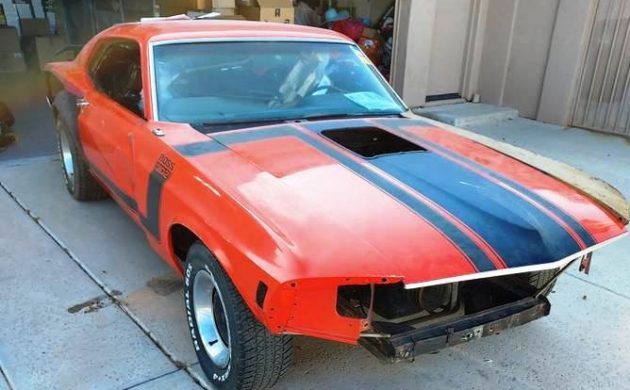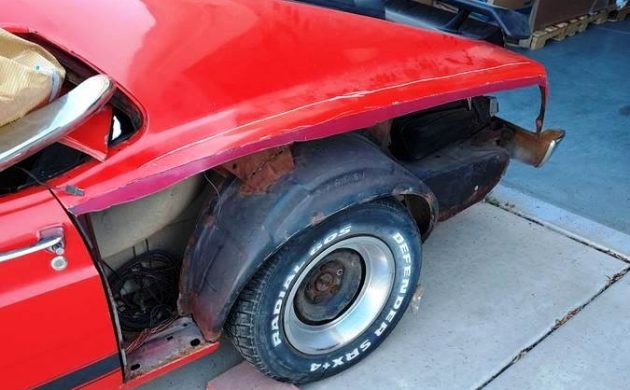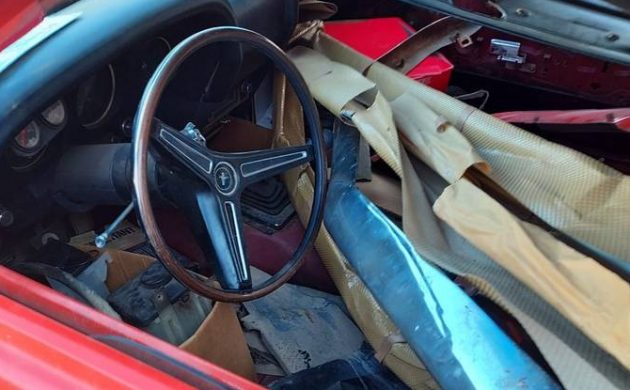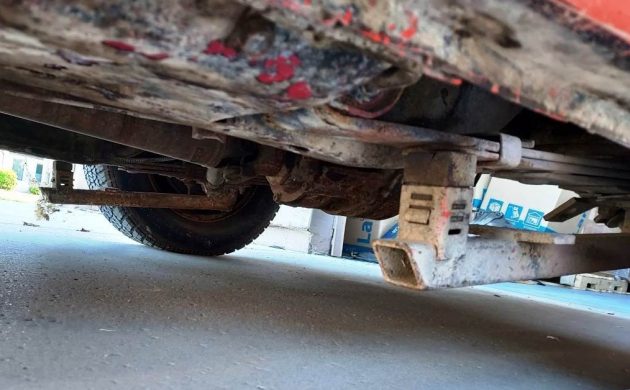Finishing another enthusiast’s restoration calls for patience and extreme vehicle-specific knowledge. Any meticulous mechanic can document their project’s tear-down and properly re-assemble it. This 1970 Ford Mustang Boss 302 in Goodyear, Arizona requires a buyer who either A. already knows how a 1970 Mustang goes together, or B. can research the less-than-obvious bits to get it right. The listing here on Craigslist claims the Trans-Am road racing-inspired Boss maintains its original motor and transmission, a temptation that may prove hard to resist, even for those who might not normally snap up another owner’s half-baked project. The asking price of $30,000 approaches half the value of an average retail price according to NADA. Thanks to reader rex m for spotting this Copper State classic.
Speaking of half-baked, the dry Arizona climate has likely done a number on the rubber and plastic parts. On the up-side, though, many (but not all) areas that normally show rust look dry and solid. The high-winding 302 cid (5.0 L) small block made 290 HP on paper, though experts and Motor Trend’s dyno suggest they well-exceeded that number.
Normally the person replacing a quarter panel also decides how to cut the old one away. However, with all that metal removed, we see how the lower portions are fairly solid, a definite plus. Also the decision of how much metal to replace has already been made so the new buyer saves the time of that debate.
If you want a good look at the interior, here it is; take a look! You’ll have to drive to Arizona for a closer inspection, but interior parts will rank low on the list of the new owner’s concerns.
Like chrome differential covers and fuzzy dice, aftermarket traction bars graced the rear suspension of nearly every ’70s car that ever served time in a high school parking lot. The Boss 302 could definitely generate axle hop, though these will likely find their way to the dust bin. Would you gamble on the potential of this partially-restored pony car?






I wouldn’t do any more to this car before the underside was stripped and repaired where necessary. The left rear cut to remove the fender is in a good place. Straighten out the present edge, match up and cut the new piece to butt the edges together, and spot weld back and forth until you have a solid weld. The bend in the original fender will help minimize any warping, making final metal finishing much easier. Also, cleaning the inside metal on both pieces and using weld through primer minimizes the area that’s got to be primered and rust proofed after welding. Got the makings of a good car here.
Yes bin the JCW traction bars.There are much better ones and period also.Can also get a panhard rod or watts link setup.Would be more like the factory Trans Am cars.
Ok. That first picture is just a lie!! Had me fooled.
scott…..
Close your eyes and you can see a solid car!